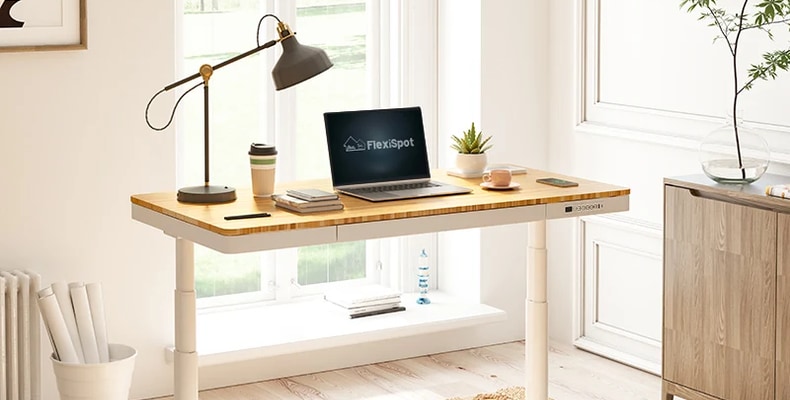Standing desks have been growing steadily in popularity over the past few years. And its no surprise why: Using a standing desk has countless benefits for your physical and mental health, as well as your performance at work. Studies have shown that standing during the workday can improve focus, promote productivity, and enhance performance among employees. Standing will also decrease your risk for many of the most common chronic illnesses, including cardiovascular disease, lower back pain, diabetes, obesity, dementia, and even cancer.
However, buying a sit-stand desk without learning how to use it correctly can do more harm than good. From joint pain to muscle fatigue, standing with incorrect posture or for the wrong amount of time can have a negative impact on your body that cancels out the good.
To get the most benefit from your standing desk, follow these six tips for using a standing desk correctly:

Alternate Between Sitting and Standing
A common mistake new standing desk users make is to attempt to stand all day long. Not only is this not how standing desks were intended to be used, but it’s almost impossible to switch straight from sitting all day to standing all day. Start by standing for just 10 minutes at a time. As you build strength and endurance, increase your time standing until you can stand comfortably for 30 minutes at a stretch. Alternate between sitting and standing every 30-45 minutes throughout the day.

Position Your Monitor Ergonomically
When your monitor and desk are not positioned correctly, you're forced to stand with poor posture just to see your screen. Positioning your monitor ergonomically in relation to your desk, on the other hand, will force you to use good posture. To position your desk and monitor ergonomically, your desk should be at elbow height. Your monitor should be 20-28 inches from your face, and the top of the screen should be at eye level, with a tilt of 20 degrees. Use an adjustable monitor mount to achieve the ideal screen position.

Buy an Anti-Fatigue Mat
An anti-fatigue mat is essential for protecting your joints while using a standing desk. It is a cushioned mat that provides extra support for your legs when you raise your height-adjustable standing desk to standing height. Anti-fatigue mats promote subtle movements of your legs that relieve the strain on your muscles and joints to increase comfort while using a standing desk.

Adjust the Keyboard and Mouse Position
It may not seem important, but incorrect keyboard and mouse position can create strain in your wrists that may eventually lead to more serious conditions like carpal tunnel syndrome, which can require surgery in severe cases. To protect your wrists, position your keyboard and mouse so they are at the same level, so your wrists can be straight while typing. When standing, your arms should be slightly more extended than while sitting.

Use Arm Supports
To further protect your wrists, you can purchase arm support. Arm supports are an area of soft padding that can be attached to your desk to support the arm you use to operate your mouse. Studies have shown that using arm supports decreases the risk of developing shoulder or neck problems. If you are prone to discomfort in these areas, it is a worthwhile investment.

Take Regular Breaks
Last but not least, don't forget to take regular breaks while using your standing desk. Part of learning to use your standing desk correctly is understanding how long you should stand at a standing desk. Experts agree that it's best to spend half your day sitting and half your day standing – but not in two big chunks. In addition to alternating between sitting and standing, as we mentioned above, take breaks to get up, walk around, and stretch throughout the day. Your body wasn’t designed to be stationary, and even if standing is better than sitting, you still need some movement.
A standing desk takes some getting used to. It takes time to develop good habits for standing desk use. For starters, make sure you buy the right accessories before you start using your desk: a monitor mount and an anti-fatigue mat are a good place to start. And while you're working on building these habits, you may find it helpful to set reminders on your phone – reminders to stand every half hour, and reminders to get up and walk around every hour or two. After a few weeks, these habits will become second nature and you will use your standing desk like a pro.













